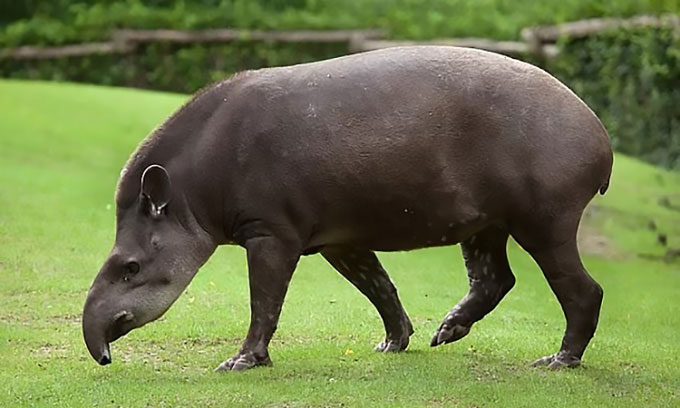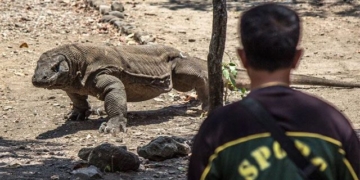Scientists have discovered a new species of burrowing frog with an impressive appearance in the wet peatlands of the Amazon rainforest.
According to a description published in the journal Evolution Systematics on February 16, the new species has been named the snouted frog (Synapturanus danta), measuring only 1.79 cm in length, characterized by its long, pointed, and curved snout resembling that of a South American tapir. Its skin is a reddish-brown color similar to chocolate, except for its belly and chest, which are cream-colored.

The newly discovered frog species in the Amazon rainforest. (Photo: Germán Chávez)
The shape, size, and coloration suggest that Synapturanus danta appears to be adapted to the soft, damp peatland environment of the Amazon rainforest. The research team was only able to locate the creature by tracking its distinctive calls.
“This amphibian looks like a cartoon depiction of a tapir, as it has a plump body with a tiny head. This is an example of the hidden diversity of the Amazon rainforest. It is important that we document it to understand the ecosystem’s functions,” said researcher Michelle Thompson from the Keller Science Action Center at the Field Museum in Chicago, one of the study’s authors.

South American tapir. (Photo: Vladmir Wrangel)
According to co-author Germán Chávez from the Institute of Herpetology in Peru, burrowing frogs of the genus Synapturanus primarily live underground and cannot travel far by digging, resulting in a relatively small distribution range. The snouted frog has only been found in the Amazon peatland, so it is not surprising if they are restricted to this environment.
With their burrowing behavior, most Synapturanus frogs contribute to nutrient cycling and soil structure alteration. “They are part of the underground ecosystem. They move down there, feed, and lay eggs, which is significant for the peatland environment,” Thompson shared.
In the next phase, the research team wants to determine whether the snouted frogs are indeed limited to the peatlands. “If so, their presence could be considered an indicator of a healthy peatland,” Chávez added.





















































